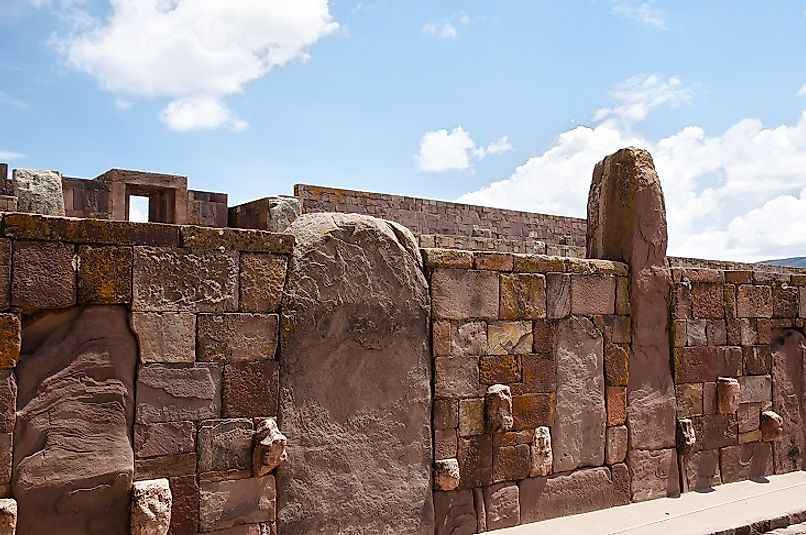UNESCO World Heritage Sites In Bolivia

El Fuerte De Samaipata
El Fuerte De Samaipata is a UNESCO World Heritage Site, renowned for its archaeological riches. It is located in the eastern foothills of the Bolivian Andes. The site considered as an ancient religious site which was built by Chane community who practice Arawak culture. It consists of two areas. The include a hill with a great deal of carvings, which is believed to have been the ceremonial center of the old town considering the flat nature of the top, and the residential and administrative district to the south of the hill. The hill is considered to be the site's religious center.
El Fuerte De Samaipata is an attraction center for both local and foreign tourists, most being drawn by the El Cascabel. These are two parallel lines pointing in the eastern sky at the position of azimuth and at an altitude surrounding the structures of three different cultures, namely the Chanes, Incas, and Spaniards. Waterfalls have eroded the stone and damaged by people walking on it, to curb further damages the area has been cordoned off and is now managed by Stonewatch, a nonprofit society, and conservation academy.The rock is a souvenir of the traditional life of the ancient communities in Bolivia and their artifacts.
The City of Potosi
The City of Potosi is an ancient industrial city in the southern highlands of Bolivia, developed for its richness in silver ore starting in the 16th Century, it was listed as heritage site in 1987. The site has vertical industrial monuments of the Cerro Rico, where water was provided by an intricate system and artificial lakes. The colonial town had Casa De La Moneda, the church of San Lorenzo, several houses and workers dwellings called Barrios Mitayos.
On June 17, 2014, the city of Potosi was listed among the world heritage centers at risk by the UNESCO world heritage committee in a meeting in Doha-Qatar, thus obligating the Bolivian government to further protect it. This move has led to the stoppage of all mining activities in the hill and creation of management committee of Cerro Rico Mountain composed of different actors. This act will save the mountain from collapse which would have resulted in environmental problem and also save the historic town.
Jesuit Missions of Chiquittos
The Jesuit Missions of Chiquittos, located in the Santa Cruz department in eastern Bolivia, are an ancient settlement for former missionaries who lived in the 17th and 18th Centuries. Their mission was to convert local communities to Christianity. UNESCO officially gazetted it World Heritage Site in 1990. It is famous for its unique fusion of European and American-Indian cultural artifacts. The churches were built in a unique way combining elements of native and European architecture.
Tourists are drawn by the large houses with double-sloping roofs and porch roofs overhanging their western galleries. Long walls are dividing three interior galleries. The heritage site was declared a monument of Bolivia by Decreto Supremo on January 4, 1950, and is protected by the Bolivian laws. Committees have also been put up to manage the site in conjunction with the Ministry Of Cultures. Protecting the site has helped to cut out the modernization threat to the villages that could have eroded them out. The site has been a source of income to the Bolivian government and has also been a treasure for the ancient culture. It has also benefited scholars in data collection.
Tiwanaku
Located in the Tiwanaku municipality in Bolivia, the Tiwanaku ruins were designated in 2000 during the 24th session of UNESCO. In ancient times they were occupied by a small agricultural village whose members left no written language, and hence made it hard to identify them. It has attracted tourist due to the presence of Akapana, a cross-shaped pyramidal structure which is 257 meters wide, 197 meters thick, and 16.5 meters tall. The structure is suspected to be a man-made mound with a mixture of large and small stone blocks, Pumapunku a man-made rectangular earthen mound faced with megalithic blocks, 167.36 meters wide, 116.7 meters thick, and 5 meters tall.
The presence of a courtyard, houses, and walls lead to the conclusion that the Tiwanaku ruins once housed an organized community that had rulers who judged the people. The site is protected by the government of Bolivia and has been a source of information to local and foreign scholars and above all a tourist destination to many.
UNESCO Wolrd Heritage Sites In Bolivia
| UNESCO World Heritage Sites in Bolivia | Year of Inscription |
| City of Potosi (Site in Danger) | 1987 |
| Fuerte de Samaipata | 1998 |
| Historic Sucre | 1991 |
| Jesuit Missions of the Chiquitos | 1990 |
| Noel Kempff Mercado National Park | 2000 |
| Qhapaq Ñan Andean Road System | 2014 |
| Tiwanaku Cultural, Spiritual, and Political Center | 2000 |







